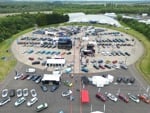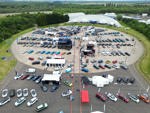Despite high-profile campaigns warning that excessive speed is the biggest danger on the road, eight out of 10 collisions occur when a vehicle is either stationary or moving at up to 10mph.
According to motor claims management firm WNS Assistance, low-speed incidents are on the rise – up from six out of ten in 2001.
While many low-speed claims come from parking and manoeuvring ‘bumps’, WNS also found the incidences of distracted motorists driving into the back of traffic queues are reaching epidemic proportions.
Experts agree that slow-speed incidents are often the result of poor driver concentration, allied to increasing congestion.
Paul Smith, founder of safespeed.org.uk, said: ‘The increase in low-energy crashes is worrying evidence of declining driver quality – which I believe is a direct result of government policy.’
Steve Johnson, spokesman for the Fleet Safety Association, said: ‘This is our clients’ biggest problem. In slow-moving traffic, drivers don’t leave enough space, then switch off and lose concentration. Even at slow speeds, drivers can’t afford to take their eye off the ball.’
Despite the vast number of slow-speed incidents, road safety charity Brake warned against complacency when driving at higher speeds.
A spokeswoman said: ‘Driving faster gives you less time to react and means you hit harder if you do crash. A lack of concentration at 5mph may cause you a scrape in a car park, but the same error in a residential road at 30mph could have disastrous consequences.’















Login to comment
Comments
No comments have been made yet.